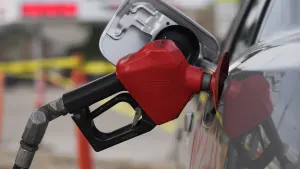More Stories
Regardless of the car you drive, there are tricks you can use that will help you save gas.
According to State Farm, good driving habits contribute to better fuel economy, which saves money and helps the planet, too.
Here are some tips to help you become a fuel efficient driver:
1. Perform routine maintenance
A well-maintained vehicle will run at its best.
2. Keep tires inflated to ideal pressure
Under-inflated tires tend to decrease mileage. And they're dangerous, too. Check manufacturers' recommendations and make sure your tires are inflated to the maximum PSI, measured when cold.
3. Plan your route and combine short trips
Warm engines run more efficiently than cold ones. So plan your route in advance. Avoid rush hour and other peak travel times. Combining short errands (such as visiting the grocery store, dry cleaner, and bank) into one trip is an efficient way to save time, as well as gas.
Want even more tips? Check out The Real Deal below:
4. Drive at moderate speeds
While every vehicle is different, in most cases mileage decreases over 50 mph. To save gas, stay at or under the speed limit, and drive at a consistent rate of speed. Use cruise control on long trips.
5. Measured and moderate driving
Aggressive driving habits such as gunning the engine, speeding, screeching around corners, and jamming on the gas pedal are major fuel wasters. Drive in a measured and moderate fashion for top fuel savings.
6. Travel light
Extra weight in the car creates a drag on the engine and consumes extra gas. Don't haul around heavy loads if you don't have to.
7. Keep your car aerodynamic
Good aerodynamics affect your car's fuel efficiency by reducing drag, especially at high speeds. Keep windows and a sunroof closed on the highway. Even keeping the car's exterior clean can make a difference.
8. Use the highest feasible gear
Driving at high speeds in lower gears burns excessive fuel. On a manual transmission, pay attention to RPMs as you accelerate and shift into high gear as soon as you reasonably can.
9. Avoid excessive idling
Idling uses a surprising amount of fuel — more than restarting the engine. If you need to wait in your parked vehicle for more than a minute or two, switch off the engine, and only start up again when you're ready to continue driving.
10. Ride share
You'll cut per-person fuel consumption in half when you share a ride. Ask friends and colleagues who live near you or frequent the same places you do to share a ride. The best part - you can split gas costs with the passengers!
11. Park farther away from your destination
U.S. motorists spend about 17 hours per year looking for parking and waste about $345 in fuel doing so. One way to reduce — if not eliminate — parking-related fuel waste is to settle for parking spaces farther from your destination.
12. Don't wait to fill up
Waiting to fill up until you're nearly out of gas increases the risk you'll have to settle for a higher per-gallon price at the first station you see.
13. Limit air conditioner use or use the eco setting
Using your car’s air conditioner can reduce fuel economy by as much as 25%, according to the EPA. This is especially pronounced in very hot weather, on short trips, and in hybrid-electric vehicles. On pleasant days, turn off the air conditioner entirely and use the coolest non-AC blower setting instead. When it’s too hot to go entirely without air conditioning, set your AC to the lowest comfortable setting or use your vehicle's “eco” AC setting if it has one.
14. Park in shade
In hot weather, park in the shade or use a windshield sunscreen to lessen heat buildup inside the car. This reduces the need for air conditioning (and thus fuel) to cool down the car.
15. More than one car?
If you own more than one car, use the most fuel efficient model that meets the needs of any given journey.
16. Is premium fuel better?
AAA research has found that unless premium fuel is recommended or required by your car’s manufacturer, it provides no added benefit. Motorists should refer to their vehicle’s owner’s manual to check which type of gasoline is recommended for their engine.
17. How can you save on gas?
There are many tips to help you find cheaper gas. Use an app that tell you the price of gas in your area like GasBuddy. Or check out AAA to see what the average prices are locally and nationally.
Joining a fuel rewards program from your local gas station or grocery is also an option. For example, if you have a BJ's or Costco membership, you can get discounted gas at their gas station.
Choose a credit card that will reward you for fueling up! Check out a list here.
Use cash instead of a credit card to pay. Many gas station charge an extra fee when using a credit card - to help them offset the card processing feeds.
More from News 12
0:23
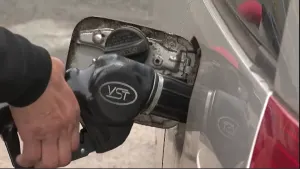
Oil prices creep higher, raise inflation concerns
1:21

Pump Patrol: Finding the best Bronx, Brooklyn gas prices before winter recess travel
1:39
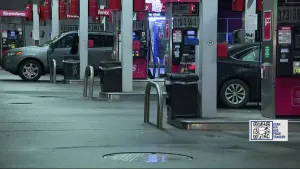
Pump Patrol: Increased gas prices expected following holiday break
1:39
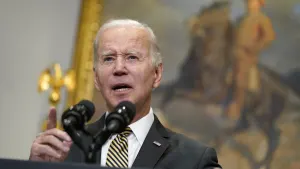
Facing tough midterms, Biden releasing oil from US reserve
1:32
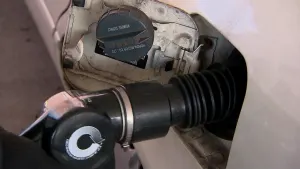
Pump Patrol: Tracking the latest gas prices across Bronx, Brooklyn
1:01
